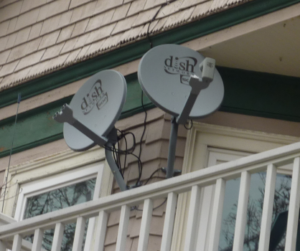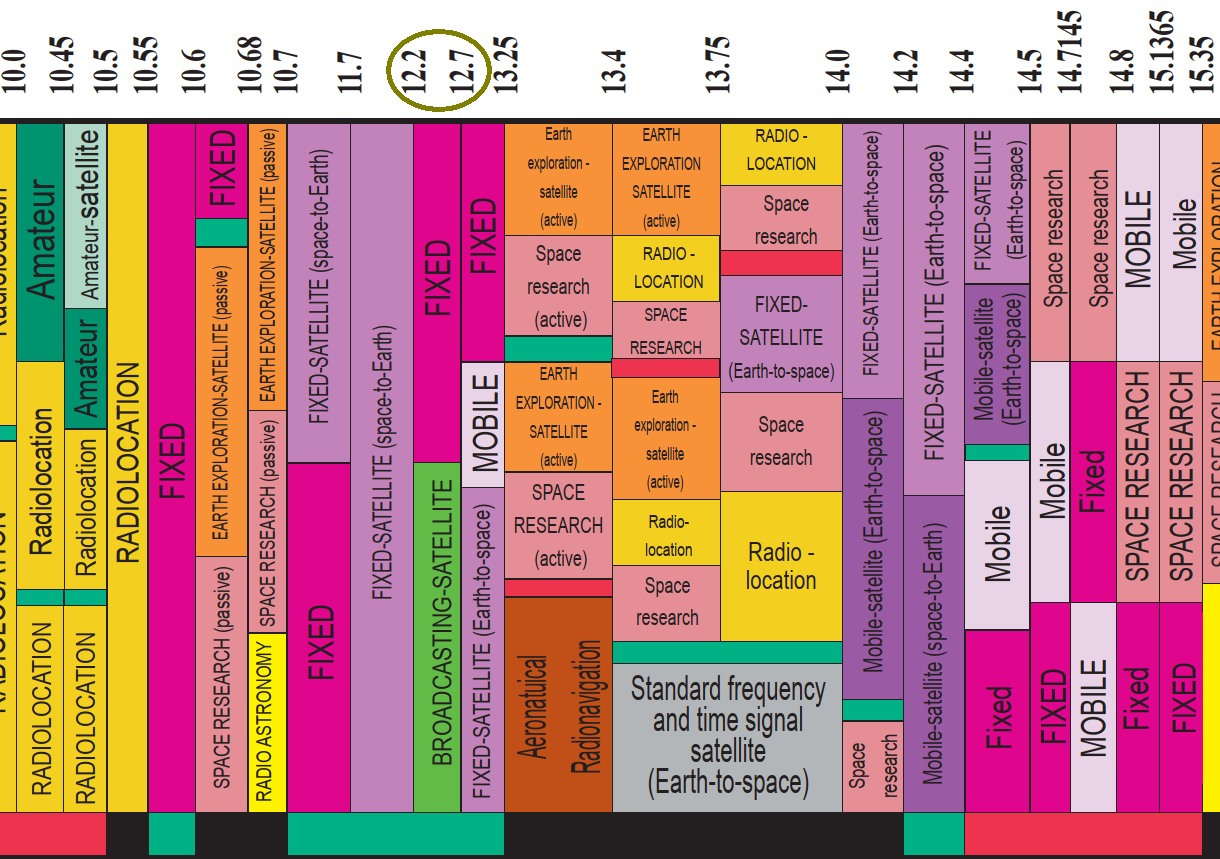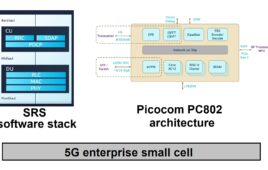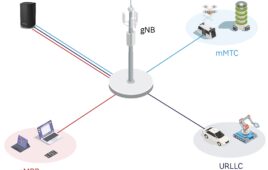A swath of 500 MHz that could add spectrum to 5G looks like low-hanging fruit, but it’s not without opposition. New sharing technology could solve the problem.
As he exited the FCC in January 2021, former chairman Ajit Pai filed a Notice of Proposed Rulemaking (NPRM) that seeks input to revamp the rules governing the 12.2 GHz to 12.7 GHz frequency band — known as the 12 GHz band — with an eye towards using it for services other than downlink-only satellite TV. Terrestrial 5G is in the mix, but other technologies could find use there, too. What becomes of the 12-GHz band will rest on technology and policy.
On February 8, Incompas held a telecom Policy Summit with one session covering the issues surrounding the 12-GHz band. The policy panel session consisted of:
- Drew FitzGerald, Reporter, The Wall Street Journal (moderator)
- Michael Calabrese, Director, Wireless Future Project, Open Technology Institute at New America
- V. Noah Campbell, Co-Founder and CEO, RS Access
- Harold Feld, Senior Vice President, Public Knowledge
- Alison Minea, Director and Senior Counsel, Regulatory Affairs, DISH
A few days prior to the panel session, 5G Technology World spoke with Roger Nichols of Keysight Technologies about 12 GHz.
The 12 GHz band is currently used for satellite TV, downlink only. The NPRM states that The 12 GHz band is allocated on a primary basis for non-Federal use for Broadcasting Satellite Service (BSS) (referred to domestically in the band as Direct Broadcast Satellite (DBS), Fixed Satellite Service (space-to-Earth) limited to non-geostationary orbit systems (NGSO FSS), and Fixed Service. While these three services are co-primary, NGSO FSS and Fixed Service are allocated on a non-harmful interference basis with respect to BSS.
 Dish Network, which currently has a license to use the 12 GHz band, wants to also use it for the company’s 5G mobile network. Other companies want to use the spectrum as well. For Dish to use that slice of spectrum for mobile communications, it first must achieve a rule change to allow uplink and terrestrial use. “We think sharing [the spectrum] is possible,” said Minea. “There is no time like the present to consider 12 GHz as the next opportunity for terrestrial flexible use in a large spectrum band.” She cited spectrum sharing technology as one possible solution to 5G interfering with Direct Boradcast Service (DBS). Campbell noted that the current rules, based on the technology of the early 2000s, no longer apply and need updating to keep up with new technologies. For example, beamforming and beam-steering technology for mobile use didn’t exist at the time the rules were implemented and could provide some interference mitigation.
Dish Network, which currently has a license to use the 12 GHz band, wants to also use it for the company’s 5G mobile network. Other companies want to use the spectrum as well. For Dish to use that slice of spectrum for mobile communications, it first must achieve a rule change to allow uplink and terrestrial use. “We think sharing [the spectrum] is possible,” said Minea. “There is no time like the present to consider 12 GHz as the next opportunity for terrestrial flexible use in a large spectrum band.” She cited spectrum sharing technology as one possible solution to 5G interfering with Direct Boradcast Service (DBS). Campbell noted that the current rules, based on the technology of the early 2000s, no longer apply and need updating to keep up with new technologies. For example, beamforming and beam-steering technology for mobile use didn’t exist at the time the rules were implemented and could provide some interference mitigation.
Opponents of opening the 12 GHz band, most notably AT&T and SpaceX, were not present on the panel. AT&T claims that allowing new players into the spectrum would interfere with its DirecTV service. SpaceX, which wants to deploy a series of non-geostationary satellite orbit (NGSO) satellites to bring wireless internet access to sparsely populated areas, has opposed any rule change.
Indeed, the National Taxpayers Union has issued a statement opposing the use of 12 GHz for terrestrial mobile communications on the grounds that it will interfere with attempts such as SpaceX to close the so-called “digital divide” where rural areas lack broadband services. If SpaceX hopes to use its planned 12,000 satellites for internet access, the rules will have to allow for uplink communications anyway.
Others such as the Competitive Enterprise Institute have come out in favor of using 12 GHz for 5G. On December 23, 2020, CEI said “The FCC should issue a notice of proposed rulemaking to explore the question of how to best use this spectrum, given its promising potential for consumers,” which CEI published a month after filing a petition advocating the use of the 12 GHz band for 5G. That’s just what Pai did a few weeks later.
For the 12 GHz band to take on terrestrial mobile uses, technologies will need to be developed that mitigate interference. What will that entail? We don’t yet know other than it would require some form of spectrum sharing. Even if technologies that exist or need development can prove to block interference, AT&T and SpaceX would likely still oppose rule changes. Why? According to Nichols, they’d have to invest in the new technology to ward off the 12 GHz intruders. As Calabrese noted, “We don’t know how to do sharing or what we can accommodate. It might be small-cell 5G using low power, rural FWA, or even unlicensed indoor use such as Wi-Fi.”
Besides spectrum sharing, other technical issues also come into play. While discussions refer to 12 GHz as midband spectrum, it’s only half the frequency of 24 GHz, the low end of mmWave 5G frequencies and it’s twice the frequency of the highest sub-6 GHz 5G midband frequencies. While low-band and midband signals transmit from macro cells and mmWave signals from small sells, where does 12 GHz fit in?
That depends on the use case, which might include fixed-wireless access (FWA) but not mobile. That’s because even if beam steering can mitigate interference, the signal beams will have to move. With FWA, the beams are fixed and could possibly be aimed in such a way as to not interfere with satellite signals. After all, the signals from satellites come from much higher angles than do terrestrial signals. Nichols expects most 12 GHz deployments will appear in small cells.
Nichols noted that any changes to the rules to add players and technology to the 12 GHz band is welcome at Keysight. “Someone has to test any technology.”





#Maybe so, but with 6G on the horizon right now you tell me your opinion folks.
I’ve been following the 6G developments. It’s ten years away from deployment. In the meantime, carriers will pay lots of money for 5G spectrum. That’s what’s fueling 12 GHz: the $80B+ collected from the recent C-Band auction.
Designers and consumers will need high-gain antennas and low-loss transmission lines. High antennas? Fresnel-zone considerations? There’s a reason that portion of the RF spectrum was designated for satellite communications. Clear line of sight. Good luck with ground-based communications.
@MicroGuy: If 28 GHz, 39 GHz, and higher frequencies are possible in terrestrial applications using small cells, why not 12 GHz? Research for 6G is focusing on frequencies over 100 GHz.